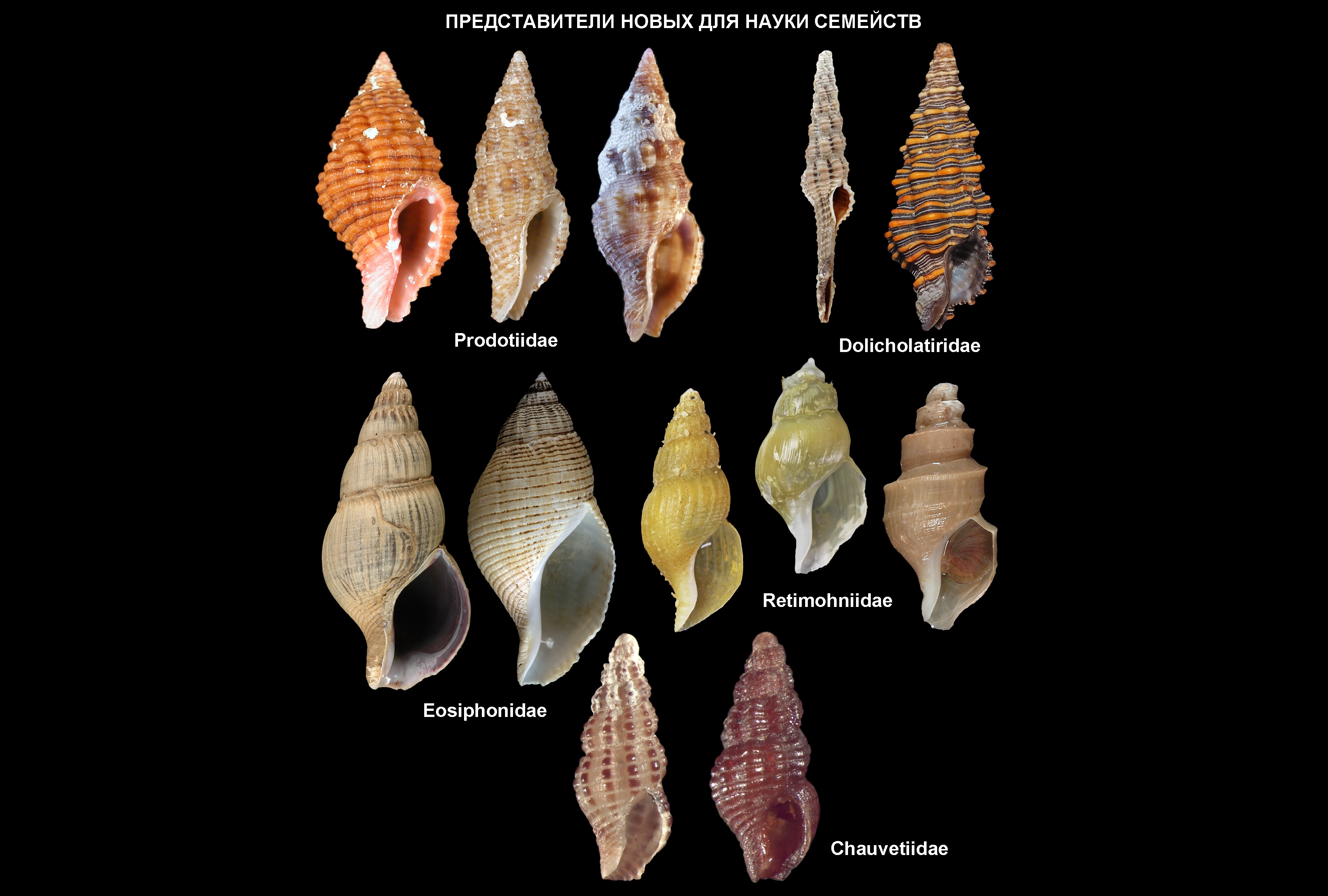
The superfamily of carnivorous gastropods Buccinoidea, the trumpeter, has a worldwide distribution in the World Ocean in the entire depth range, from the littoral to the ultra-abyssal, and is one of the most diverse taxa of marine mollusks. According to the latter classification, the superfamily included 8 families with several subordinate tribes and subfamilies. For the first time, the monophilia of the superfamily and the relationship between its constituent taxa were tested on the basis of molecular data (sequences of five genetic markers), supplemented by data on morphology and anatomy. The analysis confirmed the monophilia of the superfamily. Relationships between subordinate taxa have been critically reassessed and a new classification of Buccinoidea has been proposed, which includes 20 families and 23 subfamilies. Five new families and one subfamily have been described. The radiation of the superfamily in high latitudes - the Arctic and Antarctic - is considered in more detail. The study was carried out by scientists from the A.N. Severtsov Institute of Ecology and Evolution RAS, National Museum of Natural History of France (MNHN), University of Tokyo (AORE) and Museum of Natural History of Santa Barbara (SBMNH) and published in the Zoological Journal of the Linnean Society.
Molecular phylogenetic methods, which have become widely used in zoological research in the last decade, have revolutionized the research of gastropods. The subject of this study is one of the most diverse and abundant taxa of marine gastropods, the superfamily Buccinoidea, also known as trumpeters. Trumpeters are widespread throughout the World Ocean from the Arctic to the Antarctic, from the littoral to the ultra-abyssal, and are characterized by an exceptionally high morphological diversity, including species with shells less than 5 mm and very large forms exceeding 25 cm. Large species of the superfamily are actively hunted for food, especially in Europe, Japan, USA and Russia. There are currently 3,351 extant species, classified in 337 genera. Within the superfamily, we distinguish 8 families.
Based on the study of the molecular sequences of five mitochondrial and nuclear genes of unprecedented geographical and taxonomic coverage of the material accumulated over the past decades in various domestic and foreign museums and universities, the phylogeny of the superfamily as a whole was reconstructed. Data were obtained for 225 species of 117 genera, which belonged to 28 out of 31 previously identified taxa of the family group (families, subfamilies and tribes). The obtained reliable phylogenetic hypothesis made it possible to radically reestimate the relationship between taxa of the subfamily. Based on molecular, morphological, and anatomical data (primarily radula), a new classification of Buccinoidea was proposed, which radically differs from the previously accepted one and confirms a much more complex structure of the superfamily. It is proposed to classify trumpeters in 20 families (instead of 8), including 23 subfamilies. Five families (Chauvetiidae, Dolicholatiridae, Eosiphonidae, Prodotiidae and Retimohniidae) and one subfamily Nassariidae (Tomliniinae) were new to science. For some of the confirmed valid families, it was possible to find old names brought together in synonymy, for example, Tudiclidae and Austrosiphonidae, but the size and composition of most families changed significantly. All existing genera (except 40 for which there is insufficient data) were reclassified under the new system.
Studies of morphology and anatomy have shown that in most cases morphological data are insufficient for a reliable classification of trumpeters; however, for at least one family, the structure of the radula turned out to be a reliable diagnostic feature.
The reconstructed phylogeny of trumpeters allowed for a new look at the evolutionary history of the group, in particular, at the evolution in high latitudes. Thus, the North Atlantic and the Polar Basin have their own speciation center and the endemic Colidae family. Previously, the genera included in the family belonged to a completely different widespread family Buccinidae. The understanding of the evolution of the Antarctic fauna of trumpeters has changed even more radically. Previously, they were assigned to three subfamilies of a completely different family, widespread in the southern hemisphere, including Australia and New Zealand. It turned out that most genera of trumpeters from the Southern Ocean, despite the extremely diverse morphology of the radula and shell, form their own endemic family.
One family new to science, the Eosiphonidae, includes exclusively trumpeters that live on "biogenic substrates" - hydrothermal vents, methane seeps and submerged wood.
The figure shows representatives of the new families described in the article.
Kantor Yu.I., Fedosov A.E., Kosyan A. R., Puillandre N., Sorokin P. A., Kano Y., Clark R., Bouchet P. 2021. Molecular phylogeny and revised classification of the Buccinoidea (Neogastropoda). Zoological Journal of the Linnean Society, 2021, XX, 1–69. https://doi.org/10.1093/zoolinnean/zlab031
